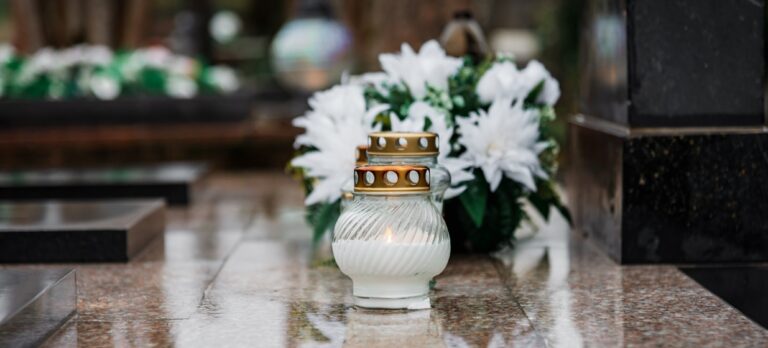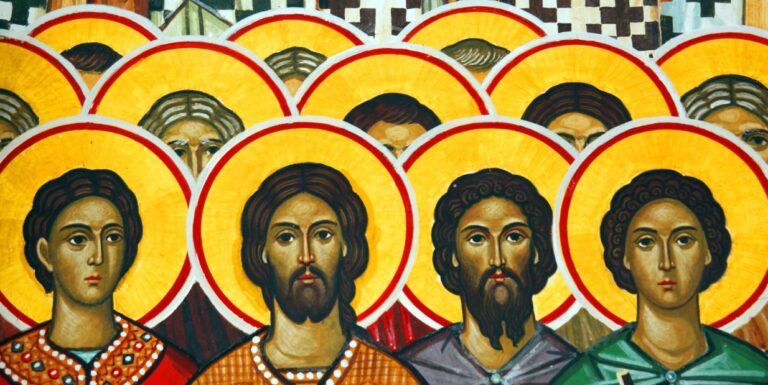
ST. THERESE OF LISIEUX
The liturgical tradition does not have a ceremony for every scenario of loss but it does offer a rich ritual repertoire from which we can draw inspiration and hope. On this Seeds of Faith blog, I am exploring how the liturgical year can help us to ritually recognize, hold and welcome the grief of those among us.

“I have no words” has become a popular way of expressing the inability to articulate either shock or amazement. It happens that speech can seem inadequate in its worldliness to convey the depth of what the soul is feeling. As a liturgist, I find that when it comes to worship, people often confuse participation with speaking or singing. Certainly, outward expressions, especially audible ones, indicate a certain level of engagement, but they could be rote. Similarly, silence and stillness could be hosting lively inner participation.
After my father passed away, nearly two decades ago, I went to Mass but could neither sing nor speak. Exhaustion and grief left me incapable of utterances. When I tried, all that came out were tears. Around the same time, I also attended a daily Mass where I chose to sit at the back in the dim lighting. My heart sought to be close to God but the sensory stimulation of even a modest daily Mass was too much for me. The well-intentioned celebrant encouraged everyone to gather at the front and worse yet, wanted us all to assume the orans position with arms outstretched during the Lord’s Prayer as a sign of openness to God. I didn’t move and added guilt to my already overwhelming grief.
This story goes to show that we come to worship not only for ourselves but also for other people. I needed the other disciples in the assembly to give voice to my prayer when I had no words. I needed them to sit in the light, to assume the gestures and movements, and to serve until I had healed enough to resume those behaviours myself.
During times of grief the participation that normally signals our enthusiasm for our faith might become too much for us. The practices that usually give us energy, might start to drain us. And so, the things we typically think of as prayer might become yet another loss if we cannot expand our understanding. St. Thérèse of Lisieux, a Doctor of the Church, may have a remedy. Around the same time as I was grieving my father’s death, my pastor mentioned that her autobiography, The Story of a Soul, was one of his favourite spiritual texts. I read it and I’ll admit, I didn’t immediately share his enthusiasm. As far as saints go, Thérèse of Lisieux’s outward gestures were underwhelming. As a cloistered nun, she didn’t establish any schools for underprivileged children or bandage any wounds, nor did she perform remarkable acts of penance or miraculous feats like renowned medieval holy women. St. Thérèse is rather known for the “Little Way,” the pursuit of holiness in ordinary life.
What my pastor may have been suggesting to me is that sometimes, especially in the midst of doubt and emptiness, prayer is simply showing up. Even when I couldn’t raise my arms or my voice, I still joined the assembly and offered the only thing I had – tears and my heart.
If you are experiencing loss and, as a result, the double whammy of what seems like a loss of religious practice, the example of St. Thérèse can remind you not to be so hard on yourself. Similarly, her sainthood cautions us not to judge others for what might seem like lukewarm religious practice from the outside for we never know what fervour lies beneath the surface.
St. Thérèse said that when she had “no words,” only silence could express her prayer. Here are some suggestions from her “Little Way” for when grief has undermined your spiritual practice:
- a smile when inclined to be silent and show weariness
- tell Jesus you love him over and over again
- slowly recite the “Our Father” or the “Hail Mary”
- allow a “burst” from the heart directed towards heaven
- Rest in silence in the presence of the Lord
Simone Brosig is an educator, author, and liturgy consultant with a PhD in Medieval Studies and a MA in Pastoral Liturgy from the University of Notre Dame. She writes and teaches about living the liturgy. Simone is a near-native Calgarian, who enjoys spending her free time “forest bathing” in the Rockies and learning languages. Simone’s new book, Holy Labours: A Spiritual Calendar of Everyday Work, can be found here.


